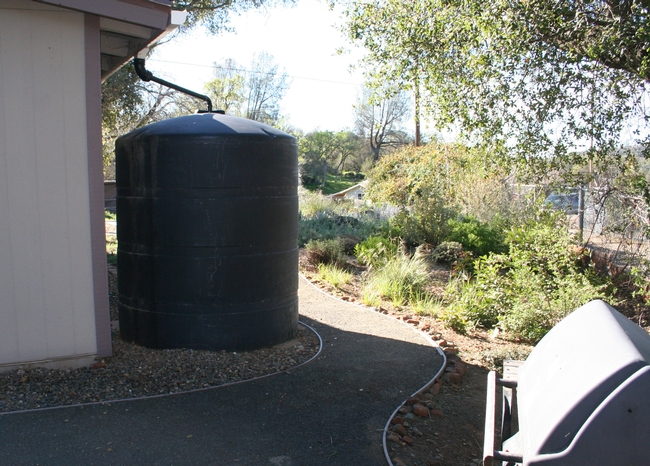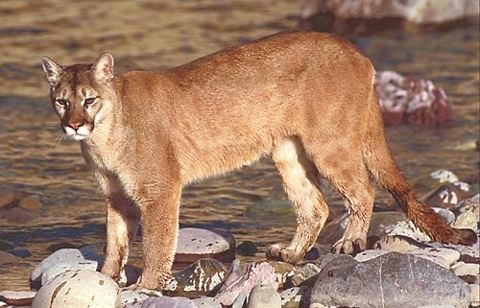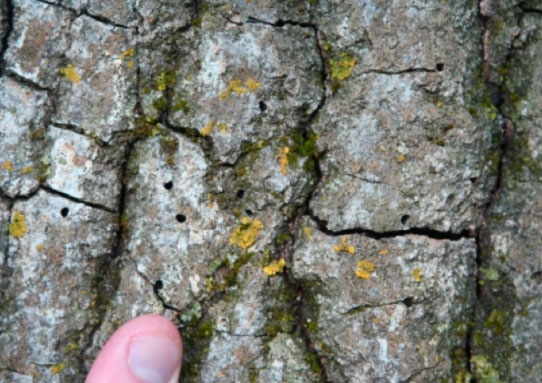Posts Tagged: Tom Scott
Firescaping can protect homes during wildfire season
Landscape + fire-prone area x protect = firescaping. The newly coined word offers hope to people who love living in wildland areas but fear a wildfire could wipe out their homes and belongings, reported Suzanne Sproul in the Inland Valley Daily Bulletin. The article also appeared in the Long Beach Press Telegram, the Daily Breeze and the LA Daily News.
UC Agriculture and Natural Resources (UC ANR) experts says its impossible to eliminate the risk, but firescaping can lessen the danger.
"I know people want to avoid moonscapes in their yards, but there are plenty of choices out there," said UC ANR Cooperative Extension specialist Tom Scott.
The article suggests homeowners
- Trim overgrown plants
- Replace highly flammable plants and trees - such as eucalyptus and palms - with less flammable plants - such as ocotillo and Calla lilies
- Use creative hardscapes, such as non-combustible fencing and inorganic mulches
The article included a link to UC ANR Cooperative Extension's information on fire safe landscaping.
Drought is a scapegoat for wildlife in urban areas
The story said a bear recently wandered into a Little League baseball game in San Luis Obispo and mountain lions are jumping fences in Northern California to kill goats. Experts said the sightings might be unusual, but not abnormal.
For decades, the article said, sprawling development into natural habitats has brought wild animals face to face with humans.
“In many cases, resources along the edge of the suburbs are far more reliable than resources out in the wild, because every year people are going to irrigate their fruit trees. Every year they're going to irrigate their lawns,” said Tom Scott, University of California Cooperative Extension specialist. “Animals are quick to use resources that are available.”
Scott said the drought is taking a toll on wildlife reproduction.
“This is the third year of drought, and that's three bad years of reproduction for wildlife species,” he said. “Wildlife population is starting to decline. It's attrition rather than a catastrophic drop, but if we went through another drought year, who knows?”
More trees infested with goldspotted oak borer
Two more trees in Idyllwild are infested with goldspotted oak borer, reported the Riverside Press-Enterprise yesterday. The announcement came at a community meeting over the weekend, in which Tom Scott, UC Cooperative Extension specialist in the Department of Natural Resources at UC Riverside, and Kevin Turner, UC Cooperative Extension goldspotted oak borer program coordinator, joined fire and forestry officials to brief local residents about the new pest threat in the area.
Residents learned how to examine oak firewood this winter and how watch their black oaks and coast live oaks this spring for signs that they may harbor the insect. Firewood or trees suspected of being infested should be reported to (951) 659-3850, the story said. More information is available at the UC Cooperative Extension GSOB website.
UC researchers discuss oak health in LA
The goldspotted oak borer continues to threaten oak trees, Tom Scott, area natural resource specialist located at UC Riverside, told participants at conference on sustaining native oak woodlands in Los Angeles, the Monrovia Patch reported.
Scott said there is still a quarantine on moving firewood out of San Diego County to prevent the spread of the damaging insect.
Reporter Sandy Gillis wrote that Larry Costello, UC Cooperative Extension environmental horticulture advisor emeritus, described the power of oaks to access water deep in the soil.
UC adds 4,584 acres of forest to its research lands
The Los Angeles Times and San Francisco Chronicle reported on UC's acquisition of 4,584 acres of Northern California mixed-conifer forest as part of a PG&E bankruptcy settlement.
Debra Levi Holtz, who wrote the article for the Chronicle, quoted Keith Gilless, dean of the UC Berkeley College of Natural Resources, which houses the UC Center for Forestry, as saying, "For us, this is a dream come true to have a network of research sites on a north-south transection through the Sierra Nevada and Cascade ranges that will dramatically improve our capacity to do work on forest ecosystems that is responsive to the questions we all have about the impacts of climate change on those regions."
Firewood movement leading cause of oak infestation
A catastrophic infestation of the goldspotted oak borer, which has killed more than 80,000 oak trees in San Diego County in the last decade, might be contained by controlling the movement of oak firewood from that region, according to researchers at UC Riverside.
“This may be the biggest oak mortality event since the Pleistocene (12,000 years ago),” said Tom Scott, a natural resource specialist. “If we can keep firewood from moving out of the region, we may be able to stop one of the biggest invasive pests to reach California in a long time.”
A cadre of UC researchers is leading the effort to assess and control the unprecedented infestation, in partnership with the U.S. Forest Service. Scott and others are working to identify where the infestation began, how it is spreading through southern California’s oak woodlands, and what trees might be resistant. In October 2010 Scott and other UCR researchers received $635,000 of a $1.5 million grant of federal stimulus money awarded to study the goldspotted oak borer and sudden oak death.
The goldspotted oak borer (Agrilus auroguttatus), which is native to Arizona but not California, likely traveled across the desert in a load of infested firewood, possibly as early as the mid-1990s, Scott said. Researchers have confirmed the presence of the beetle as early as 2000 near the towns of Descanso and Guatay, where nearly every oak tree is infested.
The half-inch-long beetle attacks mature coast live oaks (Quercus agrifolia), California black oaks (Quercus kelloggii) and canyon live oaks (Quercus chrysolepis). Female beetles lay eggs in cracks and crevices of oak bark, and the larvae burrow into the cambium of the tree to feed, irreparably damaging the water- and food-conducting tissues and ultimately killing the tree. Adult beetles bore out through the bark, leaving a D-shaped hole when they exit.
Scott and Kevin Turner, goldspotted oak borer coordinator for UC Agricultural and Natural Resources (ANR) at UCR, said that field studies in San Diego County in the last six months point strongly to the transportation of infested oak firewood as the source of the invasion that threatens 10 million acres of red oak woodlands in California.
Outbreaks have been found 20 miles from the infestation area, implicating firewood as the most likely reason for the beetle infestation leap-frogging miles of healthy oak woodlands to end up in places like La Jolla. In contrast, communities that harvest their own trees for firewood have remained relatively beetle-free, even as adjacent areas suffer unprecedented rates of oak mortality. Both examples support the growing conviction that the movement of infested firewood is the primary means by which the beetles are spreading, Scott said.
California’s coast live oaks, black oaks and canyon live oaks seem to have no resistance to the goldspotted oak borer and, so far, no natural enemies of the beetle have been found in the state.
The devastation can be measured in costs to communities and property owners for tree removal, the loss of recreation areas and wildlife habitat, lower property values and greater risk of wildfires. The three oaks under attack may be the single most important trees used by wildlife for food and cover in California forests and rangelands.
Most of the dead and dying trees are massive, with trunks 5 and 6 feet in diameter, and are 150 to 250 years old. The cost of removing one infested tree next to a home or in a campground can range from $700 to $10,000. The cost of removing dead and dying trees in San Diego County alone could run into the tens of millions of dollars. In Ohio, which has experienced similar losses from the emerald ash borer, several small cities went bankrupt because of tree removal costs associated with that beetle, Scott said.
So many oaks have died in the Burnt Rancheria campground on the Cleveland National Forest – a favorite spot for campers who favored the shade of a dense canopy of coast live oaks – that the Forest Service has had to erect shade structures. Other state and county parks in the region have suffered equally devastating losses.
Turner said an Early Warning System of community volunteers launched in San Diego County now includes representatives from every southern California county as far north as Ventura. Those volunteers are trained to monitor the health of oak trees in their communities and report any unusual changes.
At the same time, a network of UC Cooperative Extension, ANR, U.S. Forest Service and other agencies in the region is working with woodcutters, arborists and consumers to discourage the sale and transportation of infested wood. Wood that is bark-free or that has dried and cured for at least one year is generally safe to transport, Scott said. This relatively small change in firewood-handling methods could save a statewide resource without jeopardizing the firewood industry, he said.
Local, state and federal agencies recognize that firewood production is one of the least-regulated industries in California, and view UC Cooperative Extension education as the best means of stopping goldspotted oak borer movement in firewood.
“Quarantines don’t work, but enlightened self-interest can keep oak woodland residents from importing GSOB-infested firewood,” Scott said. “This is a situation where the university can play a critical role in changing behavior through research and education rather than regulation.”
***
Tips for buying oak firewood
• Ask where the firewood comes from. If the source is San Diego County, ask what precautions the seller has taken about the goldspotted oak borer.
• Wood should preferably be bark-free, or it not, have been dried and cured for one year prior to movement.
• If you see D-shaped exit holes, be reluctant to buy unless you know the wood has dried for a year or longer.
For images or to read the UC Riverside press release, go to http://newsroom.ucr.edu/2715.

Gold spotted oak borer



